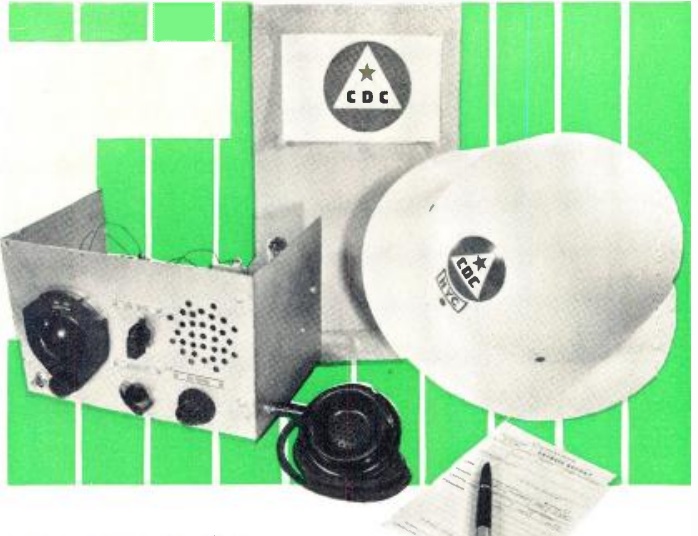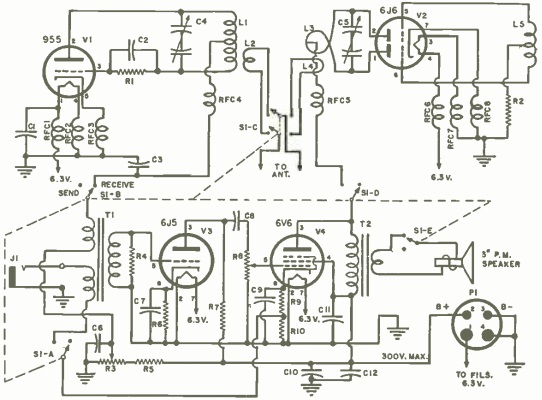 Seventy years ago this month, the May 1951 issue of Radio News carried the plans for this 220 MHz transceiver designed for civil defense use. The band was chosen because of it was authorized for use by holders of the newly minted Technician license. With many younger hams being drafted, it was thought that opening up opportunities for Technician class hams would be a way to bring in the operators that were urgently needed for civilian defense operations.
Seventy years ago this month, the May 1951 issue of Radio News carried the plans for this 220 MHz transceiver designed for civil defense use. The band was chosen because of it was authorized for use by holders of the newly minted Technician license. With many younger hams being drafted, it was thought that opening up opportunities for Technician class hams would be a way to bring in the operators that were urgently needed for civilian defense operations.
The main design parameter for the set was to provide reliable communications over a 5 mile range. This would be sufficient to cover a small town, or, in the case of a larger city, one police precinct, upon which civil defense operations were often based. Lower bands could be used for inter-city communications, freeing up units such as this for use in local emergencies.
The heart of the circuit was a 955 acorn tube, with more common miniature tubes (6J6, 6J5, and 6V6) rounding up the circuit. The 955 operated as a superregenerative transceiver. The tuned circuit used off the shelf components, but the capacitor required some modification to cover the entire band. If a frequency meter were not available, the magazine noted that in a TV with a 21 MHz IF, the set’s local oscillator would radiate on 225 MHz, allowing calibration of the transceiver. An additional hint in areas with a channel 13 TV signal would be that if the TV station were audible, this meant that the transceiver was tuned too low.
The author reported good signals over a 17-mile path with the set, meaning that for its intended use of 5 miles, the two watt set would likely perform well.

